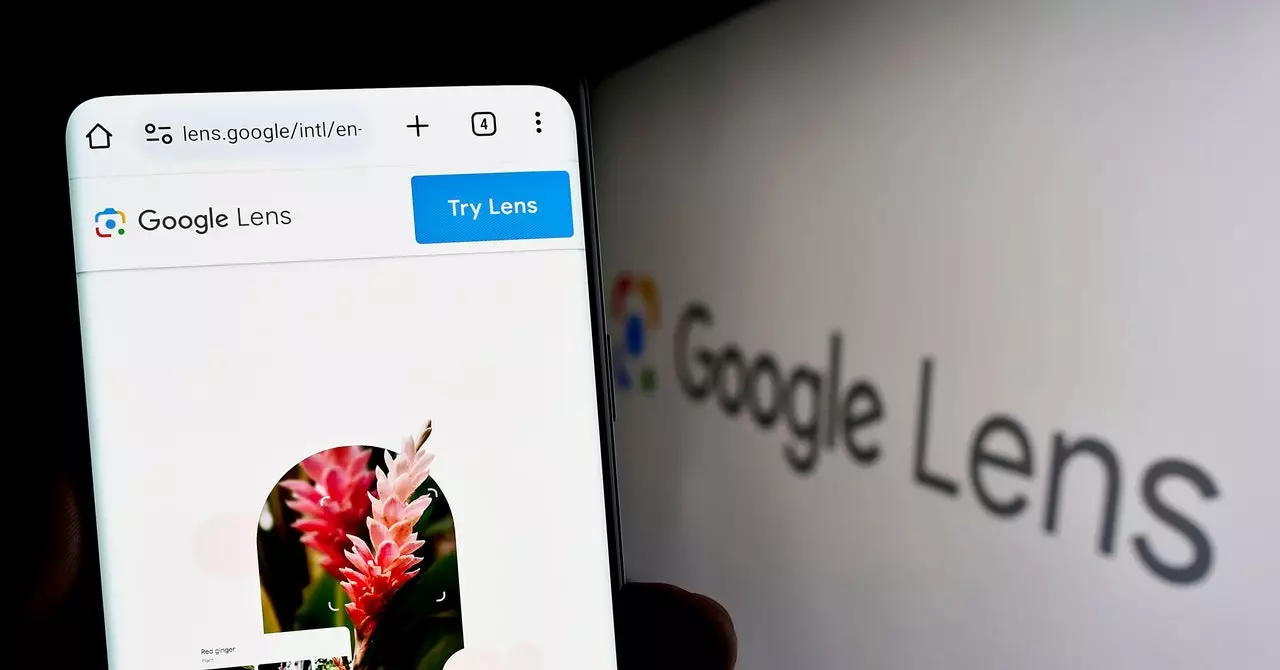In 2017, Google Lens emerged on the tech scene, revolutionizing how we interact with the world around us. Initially, it seemed like something plucked straight from a science fiction novel: the ability to point your camera at an object and receive instant information about what you’re seeing. This groundbreaking technology eliminated the need for clumsy text inputs and demonstrated Google’s ambition to integrate artificial intelligence (AI) and machine learning into everyday search functionality. Fast forward to today, and Google Lens has evolved significantly, boasting enhancements that allow for more expansive searches, including multimodal options that further blur the lines between the digital and physical realms.
One of the standout developments of Google Lens is its transition towards multimodal searching. Users are no longer limited to still images but can now engage with the platform using a combination of video, images, and voice commands. This allows for a more dynamic interaction, where questions can be asked in real-time; for example, if you encounter unusual clouds, you can simply ask, “What kind of clouds are those?” This shift reflects a broader trend in technology where user experience is prioritized, enabling individuals to find information quickly, efficiently, and intuitively.
The multimodal capabilities not only enhance user engagement but also showcase the underlying AI advancements that power Google’s search ecosystem. Leveraging voice commands alongside visual inputs transforms the standard search model into a more interactive dialogue between the user and the device. Instead of merely identifying static objects, Google Lens can now operate in real-time scenarios, providing instant insight and advice on a wide range of topics.
Shopping represents a pivotal area for Google Lens, and the updated features aim to further enhance the shopping experience. Previously, if a user photographed a product, they would receive related images through a carousel display. The evolved Lens proposes a more integrated shopping experience by linking users directly with places to purchase the item, curated customer reviews, and comparative shopping tools. This allows consumers to not only discover products but also make informed purchasing decisions all from one seamless interaction.
In a market where visual search is becoming a crucial component of online shopping—dominated by competitors like Amazon and Pinterest—Google’s differentiated approach offers a competitive edge. By providing deeper insights and additional context around products, Google Lens serves to streamline the shopping process, potentially reshaping consumer behavior into a more tech-savvy format where purchases are made at the tap of a screen.
Additionally, one of the most exciting features of Google Lens is its potential for ‘video understanding.’ Unlike traditional still image recognition, this feature allows users to capture video snippets and receive feedback about objects or issues in real-time. For example, a user could film a broken appliance, and Lens would provide troubleshooting tips based on its analysis of the video content. While still experimental, this capability presents a substantial leap forward in how we might seek information and resolve everyday challenges.
The implications of video understanding extend beyond simple object identification. Imagine a world where vast libraries of personal or public videos could be made searchable, transforming passive viewing into an engaging, interactive experience. By harnessing advanced AI techniques, Google Lens could greatly enrich the search experience, once again revolutionizing how we obtain information.
As Google Lens continues to blossom, there is an intriguing possibility of its integration with augmented reality (AR) technologies, particularly through Google’s Project Astra. This venture aims to develop smart glasses that utilize the same sophisticated technology found in Google Lens, allowing users to dynamically interact with their environment by receiving instant data overlays. The prospect of blending Lens’s visual search capabilities into AR devices could mark the dawn of a new era where digital tools seamlessly merge with our physical surroundings.
Competitors like Meta are also exploring similar technologies, emphasizing a future where ordinary users can tap into a wealth of information simply by wearing AR glasses that enhance their perceptions. While Google’s earlier attempt with Google Glass faced several challenges, the current advancements in AI and Lens’ comprehensive features might create a more viable product.
Google Lens has come a long way since its inception, embodying the cutting-edge evolution in visual search technology. The move towards multimodal interactions, enhanced shopping support, and aspirations for AR compatibility positions Google Lens not just as a tool, but as a precursor to the future of how we will search and interact with the world around us. As these technologies continue to develop, the question remains: how far can Google push the boundaries of visualization and interaction in our everyday lives?

